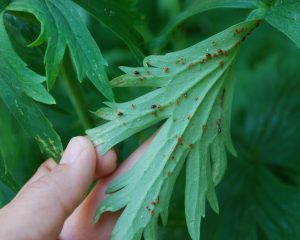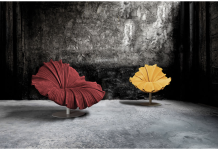
Winter can be hard on gardeners and our indoor plants. Low light, shorter days and dry air stress our houseplants while helping insects thrive. Don’t despair if insects have moved in and your plants are struggling with yellow or speckled leaves. Instead, invest a bit of time and effort managing these pests and keeping your plants looking their best.
Start by making sure your plants receive the proper amount of light and water. A healthy plant is better able to resist and recover from insect infestations. Check the plant tag, internet or plant book for the recommended growing conditions.
Make needed adjustments in your plant’s care. Then take a closer look at the upper and lower leaf surfaces and stems of the plants for clues to the cause of the problem. Here are some of the more common indoor plant pests and organic options, safe for children and pets, for managing them.
Fungus gnats are those small fruit fly-like insects that flit around your house. They feed on plant roots and organic matter in the soil. They usually don’t harm the plants, but certainly are annoying.
Just sprinkle an organic insecticide that contains the active ingredient Bacillus thuringiensis israelensis on the soil surface. This naturally occurring bacterium only kills the larvae of fungus gnats, black flies and mosquitoes.
Aphids are common pests of indoor and outdoor plants. These small teardrop shaped insects suck plant juices, causing the leaves to yellow, brown, wilt or become distorted. They secrete a clear sticky substance known as honeydew.
Mites cause similar damage, but are too small to see without a hand lens. If you suspect mites, shake a leaf over a white piece of paper and watch for specks, the mites, moving across the paper. Don’t wait until you see webbing to control these pests. At that point there are thousands of mites making it difficult to control.
Both these types of pests can be managed in the same way. Start by placing plants in the sink or tub and knock the insects off the plant with a strong blast of water. Follow with several applications of insecticidal soap to kill the adults. Repeat as needed. Or suffocate all stages of the insects with a lightweight horticulture oil.
Bumps on the stems and leaves of plants that can be easily scraped off with a thumbnail are scales. Their shells protect the adults and eggs from predators, weather and most insecticides. A similar pest, mealybug, has white waxy strands on its body for protection. Mealybugs can be found on stems, leaves and area where leaves and stems meet.
Both types of insects suck the plant juices, causing leaves to yellow and plants to decline. And just like aphids and mites, they secrete honeydew. Both are difficult to control and require persistence on your part.
For mealybugs, remove the hard scale covering with your thumbnail or old toothbrush. Use a cotton swap dipped in alcohol to dissolve its waxy covering and kill the insect. Then spray with insecticidal soap to kill the immature insects. This takes time and persistence to control these pests.
Or apply a lightweight horticulture oil, like that used for mites and aphids, to suffocate both the adult and immature stages of these pests. Continue to watch for outbreaks and treat as needed.
No matter what products you choose, natural or synthetic, make sure they are labeled for the plant and pest you are treating. And always read and follow label directions carefully.
Investing time in managing pests as soon as they appear means healthy and more attractive plants to brighten your indoor décor now and for years to come.
By Melinda Myers
Melinda Myers is a columnist and contributing editor for Birds & Blooms magazine. Her web site is www. melindamyers.com.



